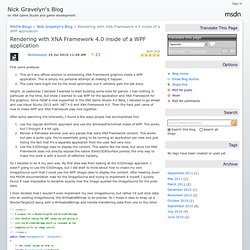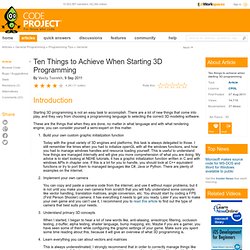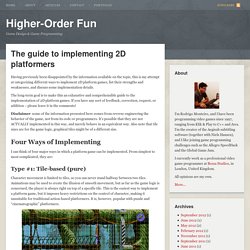

AI Life. Tip: To use the program, set the desired parameters by using the Settings sub-menu, and then initialize the appropriate type.

Introduction The project aims at developing a program which could demonstrate and simulate Artificial Life. The project implements three main technologies which are used in the Gaming industry and Robotics for coding intelligent agents. These are: Neural Networks Genetic Algorithms Steering Behaviours The project will implement each of these, and demonstrate their usefulness in creating Intelligent Agents. The algorithms demonstrated are the core of almost every game. Applications: Game Development Simulator Development Machine Learning Intelligent Toys Background Neural Networks An artificial neural network (ANN), often just called a "neural network" (NN), is a mathematical model or computational model based on biological neural networks. In more practical terms, neural networks are non-linear statistical data modeling tools. Genetic Algorithms Steering Behaviours. Rendering with XNA Framework 4.0 inside of a WPF application - Nick Gravelyn's Blog.
First some prefaces: This isn’t any official solution to embedding XNA Framework graphics inside a WPF application.

This is simply my personal attempt at making it happen. The code here might not be the most optimized, but it certainly gets the job done. Alright, so yesterday I decided I wanted to start building some tools for games. I had nothing in particular at the time, but knew I wanted to use WPF for the application and XNA Framework for the graphics. After some searching the interwebs, I found a few ways people had accomplished this: Use the regular WinForm approach and use the WindowsFormsHost inside of WPF. So I decided to do it my own way. I then decided that I wouldn’t even implement my own ImageSource, but rather I’d just stick data into an existing ImageSource, the WriteableBitmap to be precise. With that in place, I now had a mechanism for rendering XNA Framework content (into the RenderTarget2D) and moving that into the WriteableBitmap which could be consumed by WPF. Ten Things to Achieve When Starting 3D Programming.
Starting 3D programming is not an easy task to accomplish.

There are a lot of new things that come into play, and they vary from choosing a programming language to selecting the correct 3D modeling software. These are the things that when they are done, no matter in what language and with what rendering engine, you can consider yourself a semi-expert on this matter. Build your own custom graphic initialization function Today with the great variety of 3D engines and platforms, this task is always delegated to those. I still remember the times when you had to initialize openGL with all the windows functions, and how you had to manage windows handles and resource loading yourself.
This is useful to understand how things are managed internally and will give you more comprehension of what you are doing. I am sure when you manage to achieve these ten things, you can say you have the basic knowledge of 3D programming. The guide to implementing 2D platformers. Having previously been disappointed by the information available on the topic, this is my attempt at categorizing different ways to implement 2D platform games, list their strengths and weaknesses, and discuss some implementation details.

The long-term goal is to make this an exhaustive and comprehensible guide to the implementation of 2D platform games. If you have any sort of feedback, correction, request, or addition – please leave it in the comments! Disclaimer: some of the information presented here comes from reverse engineering the behavior of the game, not from its code or programmers. It’s possible that they are not ACTUALLY implemented in this way, and merely behave in an equivalent way. Also note that tile sizes are for the game logic, graphical tiles might be of a different size. I can think of four major ways in which a platform game can be implemented. Type #1: Tile-based (pure) Character movement is limited to tiles, so you can never stand halfway between two tiles. Slopes.